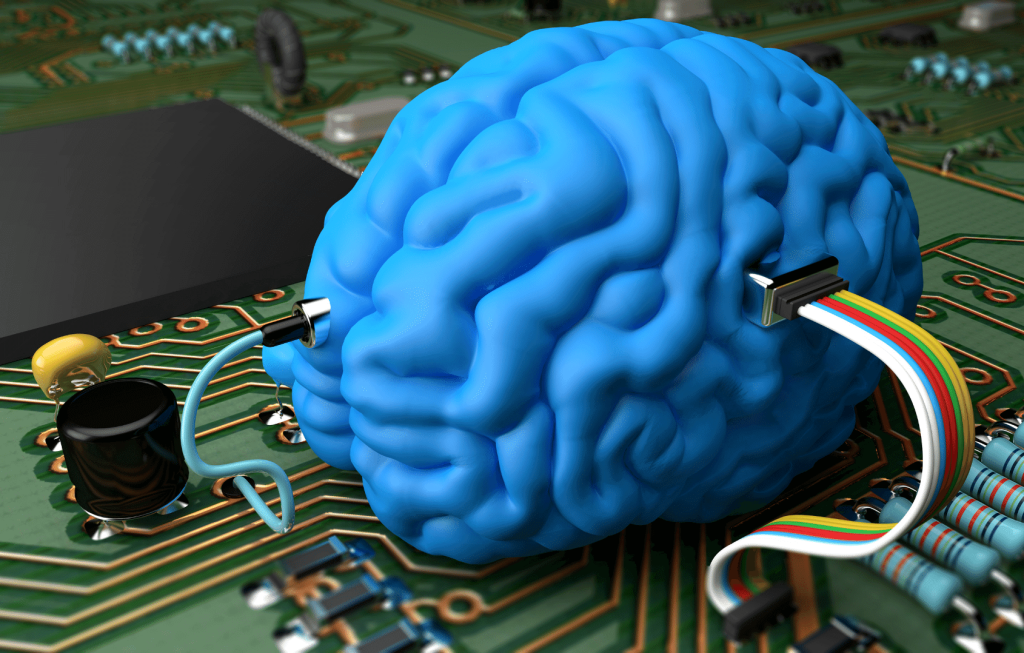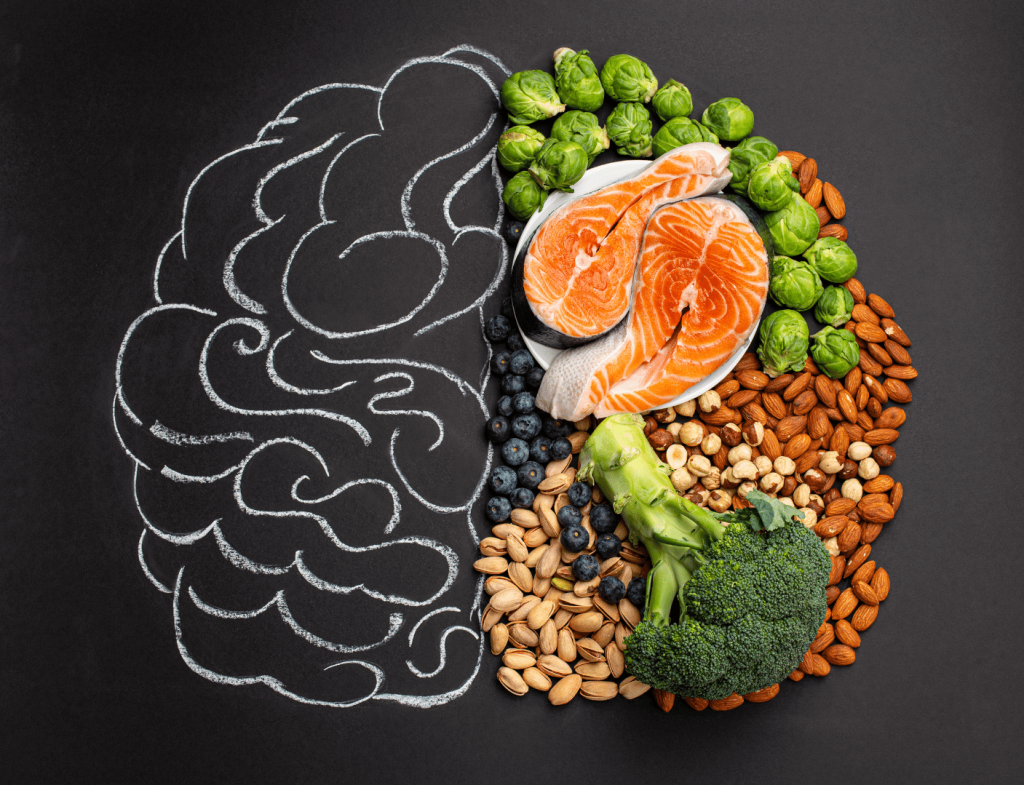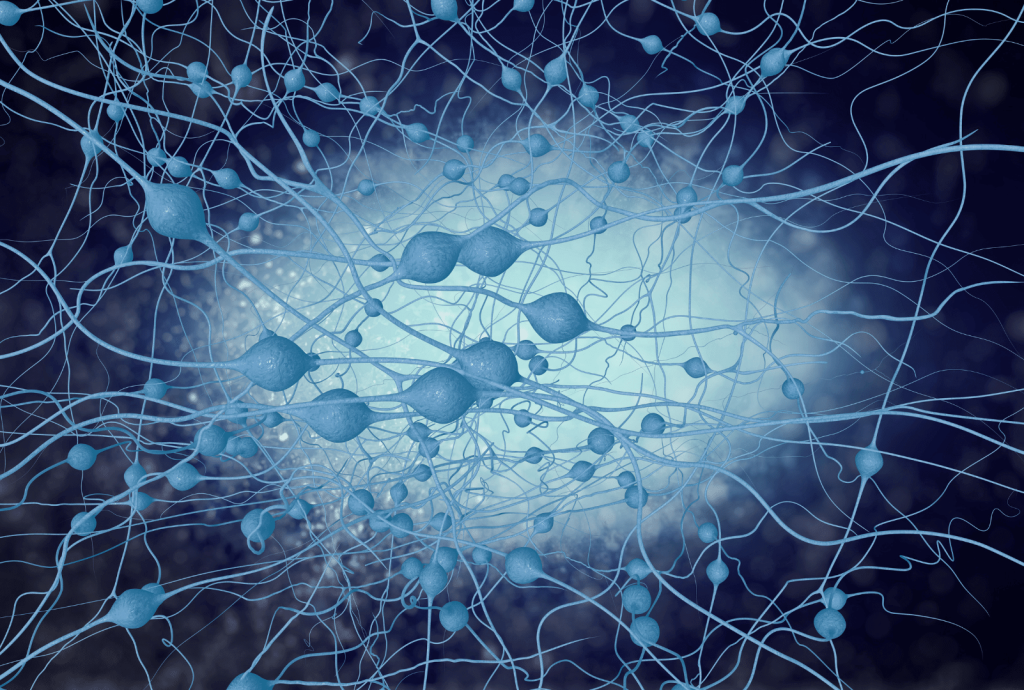In this article, you’ll learn about neuroplasticity, neuroplasticity types, and diet and lifestyle tips that enhance neuroplasticity. In the next article, we’ll cover powerful neuroplasticity-enhancing supplements.
What Is Neuroplasticity?
Neuroplasticity, often referred to as brain plasticity or neural plasticity, is the brain’s remarkable ability to reorganize itself, both functionally and structurally. This means your brain’s structure and function do not remain fixed after a certain age; rather the brain has an ever-changing nature and it is capable of growing and adapting.

Neuroplasticity occurs throughout an individual’s lifespan in response to:
- Experiences
- Learning
- Environmental changes
- Injury
Synapses play a key role in allowing neuroplasticity to occur. A synapse is a specialized junction that enables communication between two neurons. It is the point where one neuron transmits information to another neuron, allowing signals to pass from one cell to the next in the intricate network of the nervous system.
Synapses also exhibit plasticity (synaptic plasticity), which means they can change in strength and effectiveness over time. This allows the brain to rewire its circuits and optimize its responses based on experiences and learning.
Types of Neuroplasticity
There are two main types of neuroplasticity: structural neuroplasticity and functional neuroplasticity.
Structural Neuroplasticity
Structural neuroplasticity refers to the physical changes in the brain’s architecture, particularly in terms of its neural connections and organization. This type of neuroplasticity involves modifications to the actual structure of neurons and their interconnections, including:
- Synaptogenesis, the formation of new synapses
- The strengthening of existing synapses
- Synaptic pruning, the elimination of unused or weaker synapses
These structural changes contribute to the rewiring of neural circuits and play a pivotal role in learning, memory, and adaptation. Structural neuroplasticity is especially prominent in utero and during childhood, but it continues throughout life, allowing the brain to adapt to new experiences, learn new skills, and recover from injuries.
Functional Neuroplasticity
Functional neuroplasticity involves changes in the functional organization of the brain. It refers to the brain’s ability to reorganize its functional networks and redistribute tasks among different regions in response to changing demands or damage to specific areas. For example, if a certain brain area becomes damaged due to injury, other healthy areas might take over its functions.
This process of functional reorganization enables the brain to maintain its overall functionality despite challenges.
Functional neuroplasticity is closely linked to recovery and adaptation after injuries such as strokes or traumatic brain injuries, as well as during skill acquisition and learning new tasks. It highlights the brain’s remarkable flexibility in redistributing functions to ensure optimal performance.
Neuroplasticity Throughout Our Lifespan
Neuroplasticity is particularly prominent during early brain development, during infancy and childhood
That’s when the brains are highly adaptable and can form a vast number of synaptic connections. This early phase of plasticity allows the brain to build its foundational architecture, establish sensory and motor pathways, and learn fundamental skills like language and basic motor coordination
During adolescence, the brain undergoes another period of heightened plasticity. This is characterized by processes like synaptic pruning, where unused or weaker synapses are eliminated to streamline neural circuits. This pruning process helps refine the brain’s architecture, optimizing it for more complex cognitive functions and higher-order thinking.
Even in adulthood, neuroplasticity persists. While the degree of plasticity might be somewhat reduced compared to early developmental stages–adults continue to learn, adapt, and acquire new skills throughout their lives.
This is evident in the brain’s ability to reorganize functional networks in response to changing demands, as seen in cases of brain injury or when learning new skills.
Although neuroplasticity might decline with age, especially in terms of the brain’s ability to form new connections, it remains a relevant and dynamic process. The brain can still adapt, learn, and rewire to some extent, even in older adults.
Here are nutritional and lifestyle factors that can enhance neuroplasticity, especially as you get older.
Neuroplasticity Diet
Diet plays a crucial role in supporting neuroplasticity. The nutrients we consume through our diet provide the building blocks for the brain’s structure, communication pathways, and overall function.

Here’s how diet can help enhance neuroplasticity:
1) Omega-3 Fatty Acids
Omega-3 fatty acids, commonly found in fatty fish like salmon, as well as flaxseeds and walnuts, are known to support brain health.
These fatty acids are essential for maintaining the structure and function of cell membranes in neurons. They also play a role in balancing inflammation and oxidative stress, which can create a more favorable environment for neuroplasticity to occur.
2) Antioxidants
Foods rich in antioxidants, such as berries, dark leafy greens, and colorful fruits, help protect brain cells from oxidative damage. Oxidative stress can negatively impact neuroplasticity, so consuming antioxidants in your diet helps maintain a healthy neural environment.
3) B Vitamins
B vitamins, including B6, B9 (folate), and B12, are important for brain health and cognitive function. They support the production of neurotransmitters, which are chemicals that allow neurons to communicate. Adequate intake of these vitamins is essential for maintaining optimal neural communication and supporting neuroplasticity.
4) Protein and Amino Acids
Protein-rich foods provide the amino acids necessary for the synthesis of neurotransmitters and other brain molecules. Amino acids like tryptophan, found in sources like turkey and nuts, are precursors to serotonin, a neurotransmitter linked to mood regulation and neuroplasticity.
5) Healthy Fats
Healthy fats, such as those found in avocados, nuts, and olive oil, are essential for brain cell membrane structure. These fats help neurons communicate efficiently and are crucial for maintaining synaptic plasticity, a key aspect of neuroplasticity.
6) Complex Carbohydrates
Whole grains, fruits, and vegetables provide complex carbohydrates that serve as the brain’s primary source of energy. A consistent energy supply is essential for maintaining neural function and supporting processes related to neuroplasticity.
7) Hydration
Staying well-hydrated is essential for brain function. Dehydration can impair cognitive abilities and hinder neuroplasticity processes. Drinking enough water helps maintain the optimal environment for neural communication and plasticity.
8) Phytochemicals
Many plant-based foods contain phytochemicals that may support cognitive health. For example, resveratrol in red grapes and berries has been associated with enhanced learning and memory.
It’s important to adopt a balanced and varied diet to ensure you’re getting a wide range of nutrients that support neuroplasticity. Avoiding excessive sugar, highly processed foods, and unhealthy fats is also essential, as these can contribute to inflammation and hinder brain health.
Lifestyle Tips to Improve Neuroplasticity
There are several other ways to increase neuroplasticity beyond diet, exercise, and supplements. Here are some additional strategies that can contribute to promoting neuroplasticity:

1) Cognitive Engagement
Cognitive engagement, the active involvement of the brain in various mental tasks and challenges, fosters neuroplasticity.
When the brain is engaged in learning, problem-solving, or acquiring new skills, it triggers a cascade of neural processes. Neurons fire and form synapses. With repetition and practice, these synapses strengthen, while unused ones weaken or fade away.
Neuroplasticity not only involves structural changes in the brain, such as the growth of new synapses or the strengthening of existing ones, but it also encompasses functional changes, like the brain reallocating resources to support the areas that are most active and relevant to the tasks at hand. Cognitive engagement drives this process.
As we navigate challenges, the brain adapts by refining its networks, optimizing neural pathways, and expanding its capacity to process information.
Cognitive activities can include:
- Learning a new language
- Solving puzzles
- Doing crosswords
- Playing strategy games
2) Mindfulness and Meditation
Mindfulness and meditation involve focused attention and awareness, which can lead to changes in brain structure and function. These practices activate the brain’s prefrontal cortex, responsible for higher-order thinking and decision-making, and the right anterior insula.
The anterior insula is a part of our brain that helps us experience emotions and figure out how those emotions impact the way we think and behave.
Regular meditation may enhance gray matter density in the hippocampus, an area involved in memory. This is indicative of neuroplasticity.
Mindfulness improves stress resilience, lowering cortisol levels and reducing chronic stress’s detrimental effects on the brain. Chronic stress can impair neuroplasticity by negatively impacting the hippocampus. Meditation’s stress-mitigating benefits can thus indirectly support neuroplasticity.
Mindfulness also encourages an open, non-judgmental attitude towards experiences, fostering a growth mindset. This mindset can promote a willingness to embrace challenges and learn from failures, both essential components of neuroplasticity.
Additionally, meditation may enhance the brain’s connectivity, improving communication between different regions. Enhanced connectivity supports the formation of new neural pathways and facilitates adaptive responses to novel information and experiences.
3) Social Interaction
Social interactions play a crucial role in promoting neuroplasticity. Engaging in conversations, debates, and social activities not only feels good but also contributes to better brain health.
Evidence suggests that socially active individuals may experience fewer memory problems and a reduced risk of dementia. Neuroplasticity, influenced by social engagement, is vital for maintaining cognitive functions like memory, comprehension, communication, and emotional well-being, especially as we age.
4) Novel Experiences
Experiencing new environments and situations challenges your brain to adapt. Traveling, exploring new places, or even taking a different route to work can stimulate neural connections
5) Aerobic Exercise
Aerobic activities like running, swimming, and cycling can increase brain-derived neurotrophic factor (BDNF), a protein that supports neurogenesis.
Aerobic exercise also increases neuroplasticity by boosting blood flow and oxygen delivery to the brain. Additionally, exercise can improve the body’s ability to balance inflammation and stress, factors that can hinder neuroplasticity.
Regular exercise promotes a more adaptable and resilient brain, improving cognitive function and supporting learning and memory.
6) Sleep
High-quality sleep is essential for brain health.
- During sleep, the brain consolidates and organizes newly acquired information from waking hours. This process, particularly in the deep sleep stages, strengthens synaptic connections, facilitating learning and memory retention .
- Sleep is when the brain eliminates waste products and toxins that accumulate during the day. This housekeeping function supports the brain’s optimal function.
- Deep sleep is associated with an increase in the production of BDNF.
Therefore, adequate sleep is integral to sustaining neuroplasticity and cognitive vitality.

7) Stress Management
Effective stress management can increase neuroplasticity by reducing the harmful impact of chronic stress on the brain.
Chronic stress can damage neurons and hinder synaptic plasticity. Stress management techniques, like mindfulness and relaxation, mitigate stress hormone levels and inflammation, creating a more conducive environment for neural connections to form and adapt, promoting neuroplasticity.
8) Creativity and Artistic Expression
Engaging in creative and artistic expression can increase neuroplasticity by stimulating novel thinking and problem-solving. Painting, drawing, or writing require brain flexibility, encouraging the formation of new connections and strengthening existing ones. This process supports cognitive adaptability, fostering a more agile and open mind .
9) Brain Training Apps
While research on the effectiveness of brain training apps is mixed, some games and apps claim to challenge different cognitive functions, potentially supporting neuroplasticity in older adults.
These apps engage various brain functions, encouraging the formation and strengthening of neural connections. Regular use of these apps can enhance cognitive skills like promoting neuroplasticity and improved mental agility.
10) Fasting and Intermittent Fasting
Fasting induces the production of neurotrophic factors like BDNF, recognized as a key controller of energy balance. BDNF plays a role in regulating neurogenesis thereby supporting synaptic plasticity, and enhancing the processes of learning and memory.
As we age, the brain’s ability to form new connections may diminish slightly, but it never loses its capacity to adapt and learn. Embracing a lifestyle that fosters ongoing neuroplasticity can help maintain your cognitive vitality and your brain’s full potential. That way, we continue to learn, grow, and thrive throughout our lives.
The brain is an ever-evolving organ, and with the right care and stimulation–it can remain agile and adaptable, defying the limitations often associated with aging, and have optimal function.
Now that you’ve learned about the diet and lifestyle basis for neuroplasticity, in the next article, we’ll share about supplements that can supercharge your neuroplasticity
References
- Puderbaugh M, Emmady PD. Neuroplasticity. Published online 2023. Accessed September 28, 2023. https://pubmed.ncbi.nlm.nih.gov/32491743/
- Sharma N, Classen J, Cohen LG. Neural plasticity and its contribution to functional recovery. In: Neurological Rehabilitation. Vol 110. Elsevier; 2013:3-12.
- Power JD, Schlaggar BL. Neural plasticity across the lifespan. Wiley Interdiscip Rev Dev Biol. 2017;6(1). doi:10.1002/wdev.216
- Fandakova Y, Hartley CA. Mechanisms of learning and plasticity in childhood and adolescence. Dev Cogn Neurosci. 2020;42(100764):100764. doi:10.1016/j.dcn.2020.100764
- Laube C, van den Bos W, Fandakova Y. The relationship between pubertal hormones and brain plasticity: Implications for cognitive training in adolescence. Dev Cogn Neurosci. 2020;42(100753):100753. doi:10.1016/j.dcn.2020.100753
- White EJ, Hutka SA, Williams LJ, Moreno S. Learning, neural plasticity and sensitive periods: implications for language acquisition, music training and transfer across the lifespan. Front Syst Neurosci. 2013;7. doi:10.3389/fnsys.2013.00090
- Park DC, Bischof GN. The aging mind: neuroplasticity in response to cognitive training. Dialogues Clin Neurosci. 2013;15(1):109-119. doi:10.31887/dcns.2013.15.1/dpark
- Pauwels L, Chalavi S, Swinnen SP. Aging and brain plasticity. Aging (Albany NY). 2018;10(8):1789-1790. doi:10.18632/aging.101514
- Phillips C. Lifestyle modulators of neuroplasticity: How physical activity, mental engagement, and diet promote cognitive health during aging. Neural Plast. 2017;2017:1-22. doi:10.1155/2017/3589271
- Dighriri IM, Alsubaie AM, Hakami FM, et al. Effects of omega-3 polyunsaturated fatty acids on brain functions: A systematic review. Cureus. 2022;14(10). doi:10.7759/cureus.30091
- Pearson K, RD. How omega-3 fish oil affects your brain and mental health. Healthline. Published December 5, 2017. Accessed September 28, 2023. https://www.healthline.com/nutrition/omega-3-fish-oil-for-brain-health
- Bertrand E (lizzie). Maximize memory function with a nutrient-rich diet. Mayo Clinic Health System. Published May 30, 2023. Accessed September 28, 2023. https://www.mayoclinichealthsystem.org/hometown-health/speaking-of-health/maximize-memory-function-with-a-nutrient-rich-diet
- Salim S. Oxidative stress and the central nervous system. J Pharmacol Exp Ther. 2017;360(1):201-205. doi:10.1124/jpet.116.237503
- Xu H, Wang S, Gao F, Li C. Vitamin B6, B9, and B12 intakes and cognitive performance in elders: National health and nutrition examination survey, 2011–2014. Neuropsychiatr Dis Treat. 2022;18:537-553. doi:10.2147/ndt.s337617
- Institute of Medicine (US) Committee on Military Nutrition Research. Amino Acid and Protein Requirements: Cognitive Performance, Stress, and Brain Function. National Academies Press; 1999.
- Puri S, Shaheen M, Grover B. Nutrition and cognitive health: A life course approach. Front Public Health. 2023;11. doi:10.3389/fpubh.2023.1023907
- Complex carbohydrates. Medlineplus.gov. Accessed September 28, 2023. https://medlineplus.gov/ency/imagepages/19529.htm
- Adan A. Cognitive performance and dehydration. J Am Coll Nutr. 2012;31(2):71-78. doi:10.1080/07315724.2012.10720011
- Rajaram S, Jones J, Lee GJ. Plant-based dietary patterns, plant foods, and age-related cognitive decline. Adv Nutr. 2019;10(Suppl 4):S422-S436. doi:10.1093/advances/nmz081
- Cicero AFG, Ruscica M, Banach M. Resveratrol and cognitive decline: a clinician perspective. Arch Med Sci. 2019;15(4):936-943. doi:10.5114/aoms.2019.85463
- Namkung H, Kim SH, Sawa A. The insula: An underestimated brain area in clinical neuroscience, psychiatry, and neurology. Trends Neurosci. 2017;40(4):200-207. doi:10.1016/j.tins.2017.02.002
- Neuroscience News. Unleashing the mind: The neuroscience of meditation and its impact on memory. Neuroscience News. Published June 7, 2023. Accessed September 28, 2023. https://neurosciencenews.com/memory-meditation-23414/
- Presenter TV. Social interaction and brain health. Hometouch. Published January 4, 2019. Accessed September 28, 2023.
- Pickersgill JW, Turco CV, Ramdeo K, Rehsi RS, Foglia SD, Nelson AJ. The combined influences of exercise, diet and sleep on neuroplasticity. Front Psychol. 2022;13:831819. doi:10.3389/fpsyg.2022.831819
- Exercise can boost your memory and thinking skills. Harvard Health. Published February 15, 2021. Accessed September 28, 2023. https://www.health.harvard.edu/mind-and-mood/exercise-can-boost-your-memory-and-thinking-skills
- Gorgoni M, D’Atri A, Lauri G, Rossini PM, Ferlazzo F, De Gennaro L. Is sleep essential for neural plasticity in humans, and how does it affect motor and cognitive recovery? Neural Plast. 2013;2013:1-13. doi:10.1155/2013/103949
- Jessen NA, Munk ASF, Lundgaard I, Nedergaard M. The glymphatic system: A beginner’s guide. Neurochem Res. 2015;40(12):2583-2599. doi:10.1007/s11064-015-1581-6
- Monteiro BC, Monteiro S, Candida M, et al. Relationship between brain-Derived Neurotrofic Factor (bdnf) and sleep on depression: A critical review. Clin Pract Epidemiol Ment Health. 2017;13(1):213-219. doi:10.2174/1745017901713010213
- ACRM. How the brain is affected by art – rehabilitation medicine. ACRM. Published August 19, 2020. Accessed September 28, 2023. https://acrm.org/rehabilitation-medicine/how-the-brain-is-affected-by-art/
- Bonnechère B, Klass M, Langley C, Sahakian BJ. Brain training using cognitive apps can improve cognitive performance and processing speed in older adults. Sci Rep. 2021;11(1). doi:10.1038/s41598-021-91867-z
- Rege S. A simplified guide to the neuroscience of intermittent fasting. Psych Scene Hub. Published February 21, 2023. Accessed September 28, 2023. https://psychscenehub.com/psychinsights/intermittent-fasting-and-brain-health/
